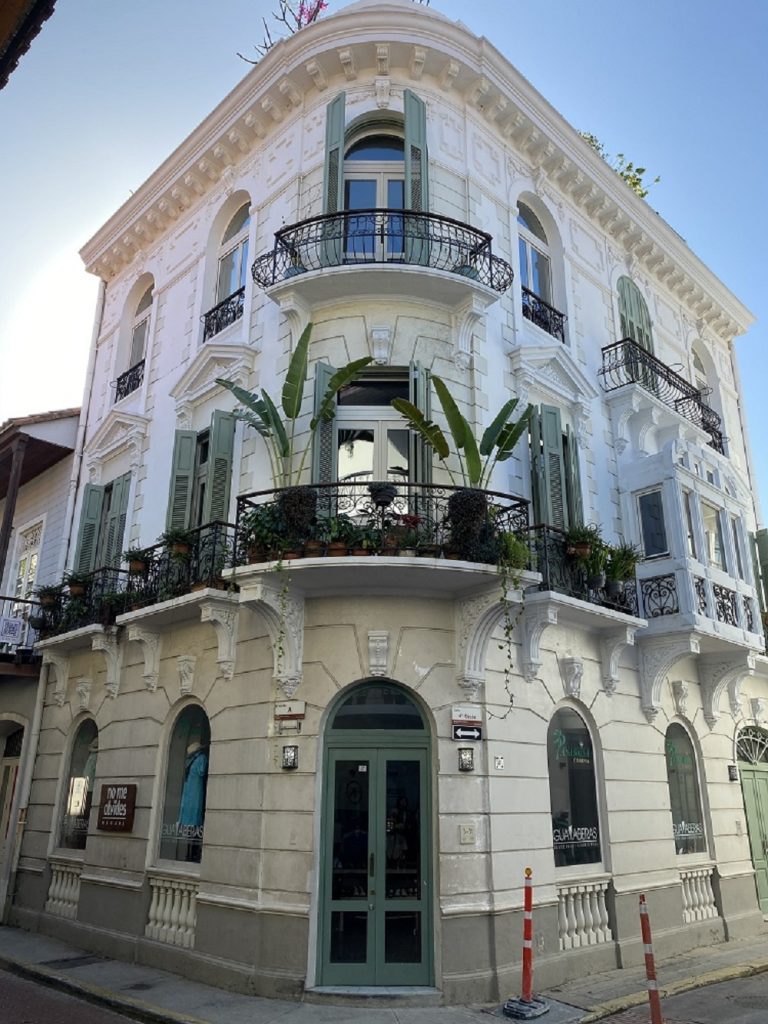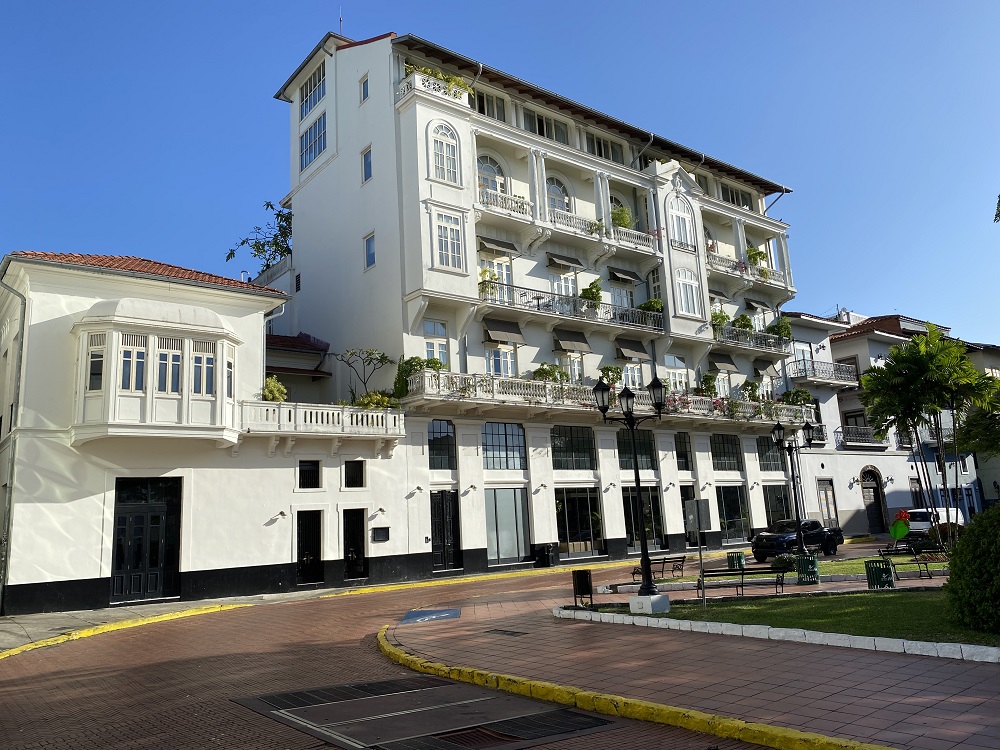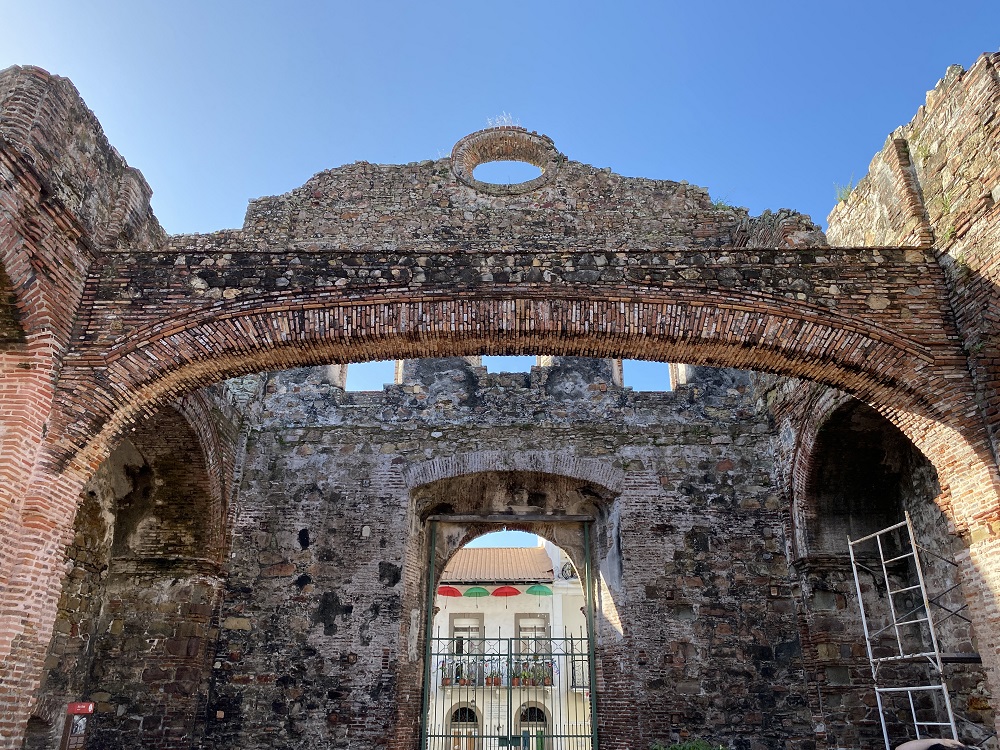Since our flight had been so early the previous day, many of us enjoyed a much needed long night’s sleep prior to today’s activities. This helped us all recharge and refresh before truly exploring Panama for the first time. Our first destination was “Casco Viejo”, which is Spanish for “Old Quarter”. However, this name can be slightly misleading. In addition to Casco Viejo, one part of Panama is known as the ancient city. This is also separate from the current central business district of Panama City. So, what’s the difference? Well, we started our tour by our guide, Juan, telling us about the ancient city. The ancient city was plundered by Captain Morgan in 1590, and then destroyed by the Spanish. This means that all that is left of the ancient city are some remains of destroyed walls and buildings.
Upon the destruction of the ancient city, began the construction of the old city, Casca Viejo. While Panama City has many skyscrapers sprawling across the skyline, the tallest buildings in Casco Viejo were only about five stories. However, the lack of height did not take away from the beauty of the city. Comparable to a different borough of any major city, Casca Viejo offers a break from the busyness of the central business district of Panama, while still participating in the culture of the city.
The architecture of Casca Viejo is a product of its numerous influences from people around the world. The most prominent architecture is neoclassical, a style popularized by the French. Prior to the United States attempting to construct the Panama Canal, the French attempted to. After about 20,000 workers lives were lost due to heat exhaustion and malaria, the French abandoned the project, and Panama. Their architecture, however, still remained.
In addition to French, there are many other types of architecture in Casco Viejo as well. The style of the Spanish, Dutch, German, and Caribbean can all be seen, even within the same block. One way to spot the difference of styles between the buildings is to look at the balconies. Some have much shorter balconies, which resemble Spanish architecture, while others have much larger balconies, or no balconies at all.



One thing that struck us all was the juxtaposition present in the city. Some very new buildings would be located right next to buildings that are just remnants of what they used to be. Juan led us into one of these seemingly destroyed buildings, where this arch made out of masonry spanned across the building.

He told us that this arch played a very important role in the history of Panama. It was this very arch that a French engineer discovered which helped him realize a canal was possible. While the rest of the building had been destroyed, this arch has remained in tact for hundreds of years. This proves that Panama does not experience any serious natural disasters. While it is consistently humid and rainy, the geographic position of the country allows for construction to remain undisturbed by forces of nature for a long time. The French engineer took photos of this arch, and used it to secure the initial investments for the canal.
We are very excited to be in Panama and hope our blogs can help you experience “Little Miami” or “Dubai of the Americas”!

Blog by Zack Gold
